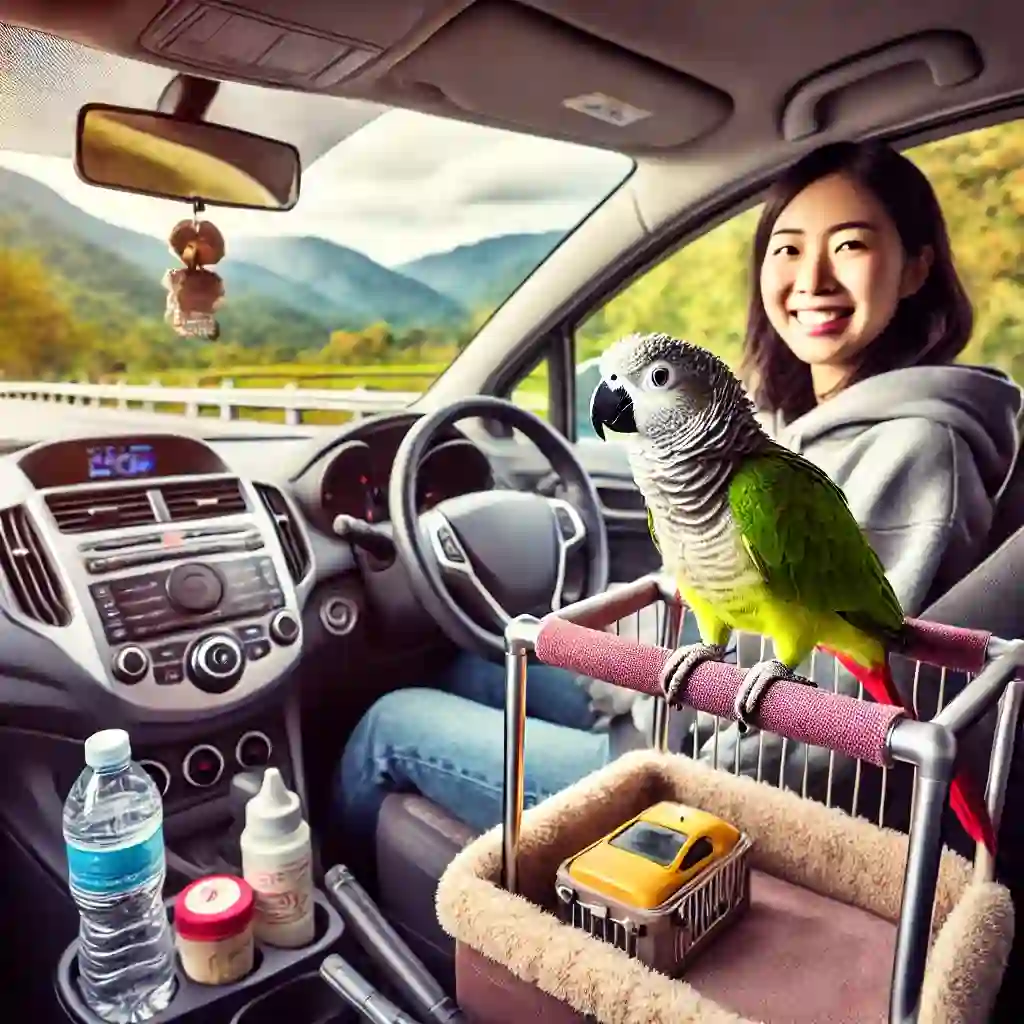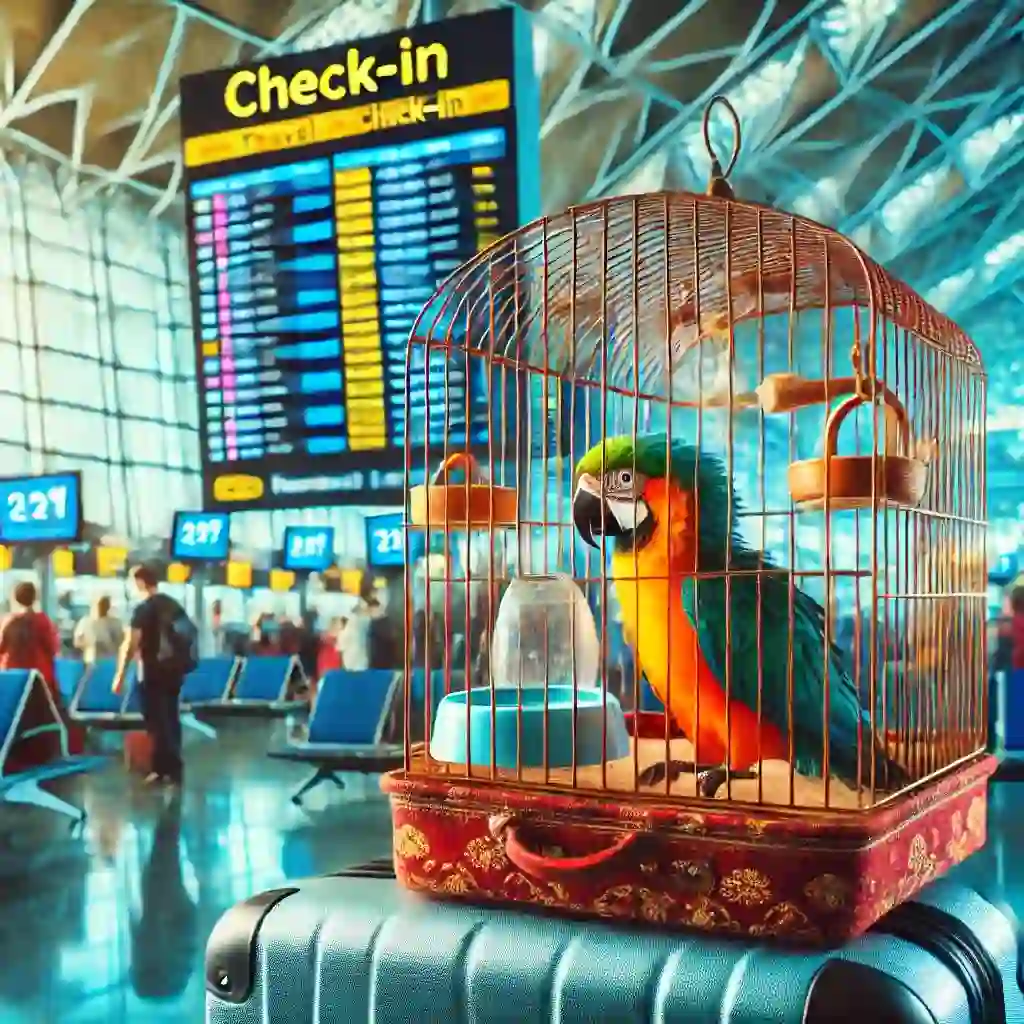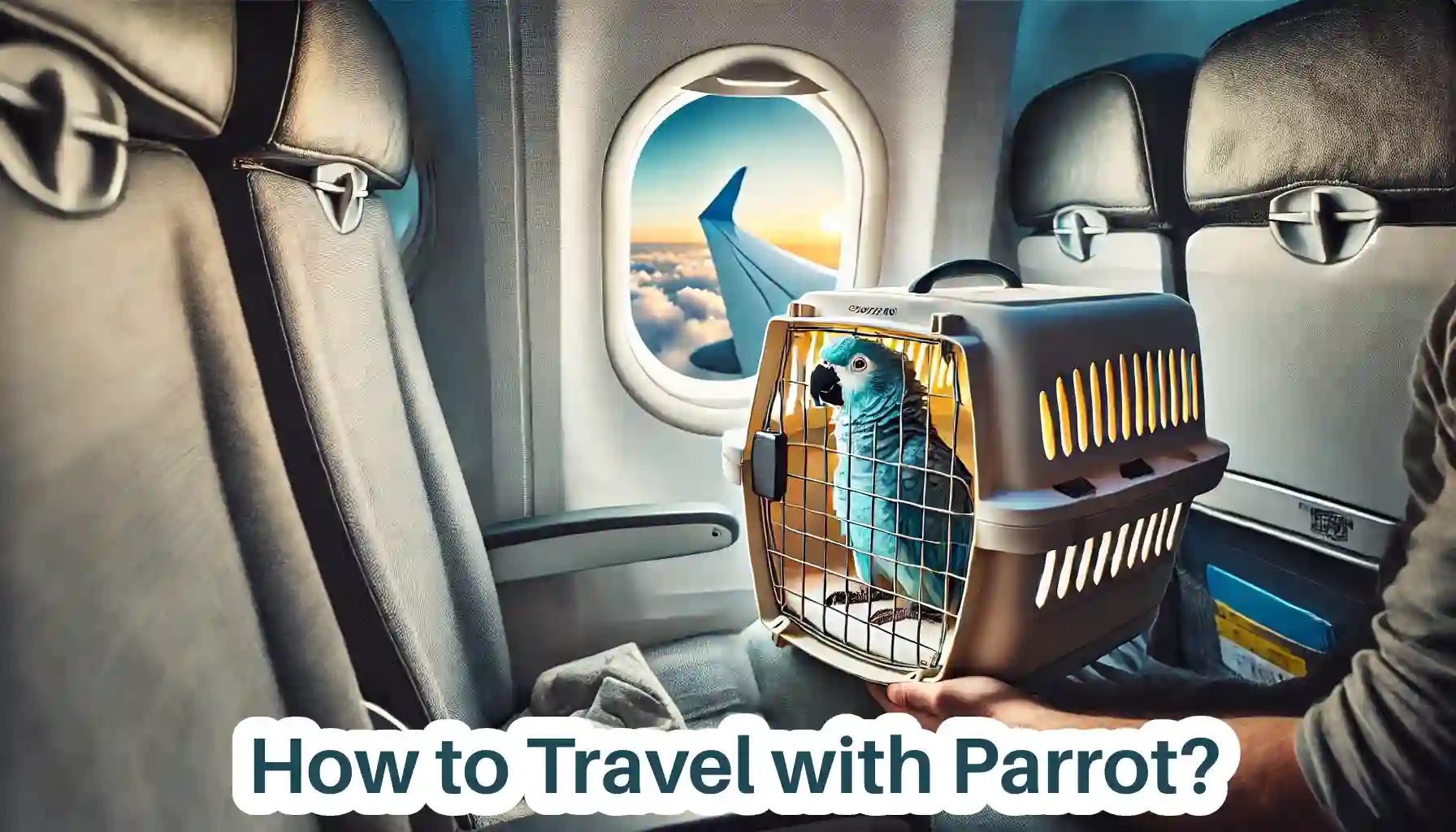Taking a parrot on vacation can be a rewarding experience if you know how to handle it. Whether it’s a road trip or a flight, ensuring your parrot’s safety and comfort should be your top priority.
With proper preparation and key tips, you and your parrot can have a stress-free trip. Did you know that parrots can develop separation anxiety during travel? Therefore, it’s important to plan each step carefully, ensuring a smooth trip for your parrot.
Preparing for Travel with Your Parrot
When prepping for a trip with your parrot, focus on getting the right cage. Choose one that’s easy to carry, not too tight, and has solid locks to avoid any “jailbreaks.” Make sure it’s cozy with soft padding and add some familiar toys for comfort.
Cage Selection and Comfort:
One of the first things to consider is choosing the right travel cage for your parrot. The travel cage should be strong and easy to carry. It needs to be big enough for your parrot to move but not too large to make it hard to transport.
Look for a cage with a secure lock to prevent any escape attempts. Some cages come with a perch and food/water dispensers, which can make the journey more comfortable for your bird.
Consider adding soft padding to the bottom of the cage to keep your parrot comfortable during the journey. Place a few familiar toys or a blanket in the cage to help your parrot feel safe and reduce stress.
Packing Essentials:
When traveling with your parrot, it’s crucial to pack all the necessary items your bird may need during the trip. Make a checklist to ensure you don’t forget anything important. Essential items include:
- A sufficient amount of bird food, such as pellets or seeds
- Fresh water in travel-friendly bottles
- Paper towels or cleaning wipes to maintain the cage’s cleanliness
- A small first aid kit with bird-safe medications
- Your parrot’s favorite toy or perch to reduce stress
- A towel or cloth to cover the cage if needed
Traveling by Car with a Parrot

When cruising with your parrot, buckle up that cage! Use seatbelts or straps to keep it from sliding or tipping over. Keep it off the front seat—airbags can mess things up. Make sure the cage sits snugly in the back for a smoother ride.
Secure the Cage:
When driving with your parrot, safety should come first. Always secure the cage in a way that prevents it from moving or tipping over during the trip. You can use seatbelts or straps to hold the cage in place on the back seat. Avoid placing the cage on the front seat due to airbags, which could cause harm if deployed.
It’s also a good idea to place the cage on a non-slippery surface to prevent sliding during sudden stops. If possible, secure the cage near the backseat to reduce vibrations and jolts that might disturb your parrot.
Temperature Control and Ventilation:
Parrots are sensitive to temperature changes. Keep your car’s temperature stable and avoid direct sunlight shining on the cage. Make sure your car’s ventilation system provides fresh air to your bird without creating drafts. If your parrot is too hot or cold, it can become stressed or even ill.
During stops, check on your parrot to ensure it’s not too hot or thirsty. Never leave your parrot in the car alone, especially on hot or cold days.
Flying with Your Parrot

Before taking off with your parrot, check airline rules—some let birds fly in the cabin, others send them to the cargo hold. Make sure your cage fits the airline’s specs and grab a health certificate from your vet. Keep your bird chill during the flight by using a light cover and checking on it regularly.
Airline Regulations:
Check airline policies before booking a flight with your parrot. Some airlines allow parrots in the cabin, while others need them in the cargo hold. Make sure your travel cage is airline-approved, with the correct size and secure latches.
Airlines usually need health certificates for birds. Visit your vet for a check-up before your trip. They will provide you with the necessary documentation that shows your parrot is healthy and fit to travel.
In-Flight Care:
During the flight, your parrot’s comfort is essential. Keep your bird calm by speaking softly and placing a light cloth over the cage to limit visual stimulation without blocking airflow. Ensure that water is available, but use spill-proof containers to avoid messes.
Check your parrot throughout the flight, checking for any signs of distress. If your flight is long, consider offering a small snack or piece of fruit to keep your parrot nourished. Avoid feeding too much, as this can make the bird uncomfortable.
Parrot Health and Safety During Travel
Keep your parrot hydrated with fresh water, offering small sips during breaks. Bring enough food but don’t overfeed—travel can mess with digestion. To reduce stress, pack their fave toys and use a light cover in noisy spots. Speak softly to reassure your bird, and check with a vet for any calming tips.
Hydration and Feeding Tips:
It’s crucial to keep your parrot hydrated throughout the journey. Ensure that your bird has access to fresh water during breaks. You can offer small portions of water during the trip, and if you are flying, check on the water levels regularly.
As for feeding, bring enough food for the entire trip. Keep a small bowl in the travel cage and offer snacks during stops or flight layovers. Don’t overfeed, as parrots may have difficulty digesting food while traveling.
Reducing Stress for Your Parrot:
Traveling can be stressful for parrots, especially if they are not used to it. To minimize stress, bring along familiar objects like a favorite toy, perch, or even a small blanket. In chaotic or noisy environments, a light cover can help you calm your parrot.
Talk gently to your parrot to reassure them that everything is okay. If your parrot gets anxious, talk to your vet before traveling. They may suggest safe calming aids for your bird.
Legal Considerations for Traveling with Parrots
Before hitting the road or skies with your parrot, check both local and international laws. Some places have strict rules, and you might need permits or health certificates. Research export and import laws to avoid trouble at customs, especially if your parrot’s species falls under international agreements like CITES.
Checking Local and International Laws:
Be sure to check domestic and international laws about traveling with exotic birds. Some countries have strict rules, and your parrot may need permits or health certificates to avoid quarantine or denied entry.
Know the export laws of your home country for international travel. Also, understand the import laws of the country you’re visiting. Visit government websites or contact embassies for up-to-date information on bird travel regulations.
Import and Export Restrictions:
Some countries have laws to prevent the illegal wildlife trade, which may affect how you travel with your parrot. Make sure your parrot’s species is not restricted or protected under international agreements like CITES (Convention on International Trade in Endangered Species of Wild Fauna and Flora). You may need additional documentation to prove that your parrot was legally obtained.
FAQs
Can I take my parrot on a plane?
Yes, many airlines allow birds to travel, but you must check the specific pet policy of the airline. Your parrot will need an airline-approved cage and health certificates.
What should I pack for my parrot during travel?
Pack bird food, fresh water, and a small first aid kit. Bring cleaning supplies and a favorite toy or perch. These will help your parrot feel comfortable during the trip.
Can parrots get stressed during travel?
Yes, travel can be stressful for parrots. To reduce stress, place familiar objects in the cage. Speak to your bird in a calm voice. Cover part of the cage to make your bird feel safe.
Do I need to check the law before traveling with my parrot?
Yes, especially if you are traveling internationally. Make sure to check local and international laws about pet travel and get any necessary permits or health certificates.
Conclusion
Traveling with a parrot requires careful planning and preparation. Choose the right travel cage for your bird. Make sure your bird stays hydrated and comfortable. Each step is important for a stress-free journey. Always check airline regulations and legal requirements for domestic and international travel.
With the right approach, you and your parrot can enjoy safe and comfortable trips, wherever you go. For more information about traveling with birds, check out this helpful guide on pet travel.




